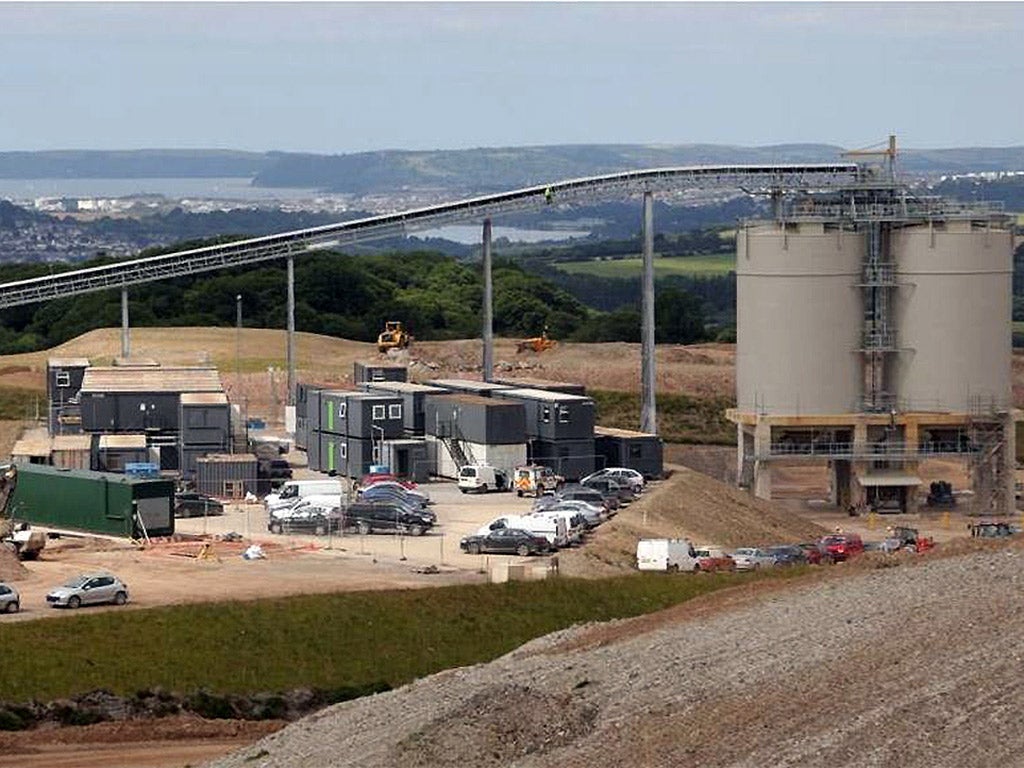UK’s mining industry is revived – by Australians
Wolf Minerals is today opening the first new mine in the UK for nearly half a century. Drakelands in Devon will be one of the world’s top five producers of tungsten – one metal whose price has not sunk because of a supply glut in recent years

Ask people about British mining and many are likely to imagine striking coal miners on picket lines, shouting anti-Thatcher slogans and clashing with police.
It is a measure of the industry’s inertia in this country that it this remains the lasting image a good 30 years on – for some, the scars have still not fully healed.
But Wolf Minerals, a little-known Australian company which is listed on London’s Alternative Investment Market, is preparing to inject life into the UK’s dormant mining industry.
Thursday is the official grand opening of its Drakelands mine, at the Hemerdon tungsten and tin project on the fringes of Dartmoor, in Devon.
It will be the first new metals mine in the UK for almost half a century, after the wave of closures up and down the country in recent decades.
The most recent reopening was that of the historic Wheal Jane tin mine in Cornwall all the way back in 1969, by the former FTSE 100 company Consolidated Goldfields. It changed hands a couple more times as owners struggled to turn a profit before finally being put to rest in 1992.
The opening of Drakelands will be a nostalgic occasion for mining veteran Nick Clarke, a non-executive director at Wolf Minerals, whose first job in mining was in fact at Wheal Jane.
Most of the plaudits, though, will go to Australian Russell Clark, Wolf’s managing director, who has managed to get the mine up and running in the space of just a couple of years.
While there has been plenty of vocal opposition to other natural resources projects across the UK – especially at fracking and other oil exploration sites – local people have welcomed Drakelands, which will create 200 jobs, with open arms.
Mr Clark told The Independent: “Two years ago I sat on the hill here and there was only trees and grass. Today we have a mine and plant and it’s all running.
“We’ve had a few teething issues through commissioning, which you always expect. Motors stop working, pumps get stuck, things break – that’s all quite normal. But when we step back and look at the overall process, which works, it’s particularly satisfying.”
He added: “We’re all very proud of what’s been done here. It’s been built quite rapidly and now we’ve got an operating mine with 200 jobs and we’re very pleased to be opening it.”
And so he should be. It is one thing to have built a mine in a downturn, but another completely to have done so in a land where mining has been forgotten.
Mr Clark knows all too well about the UK’s mining history. He completed a mining degree here but was forced to leave the UK 35 years ago when jobs were scarce as mines began to close.
“Tin prices fell in the Eighties and some of the big tin mines stopped and filled up with water. What we’re demonstrating here is that it’s possible, and we’re certainly seeing renewed interest in the country in and around exploration,” he said.
When Wolf Minerals drew up the blueprint for the mine, the price of tungsten – as with almost every other metal – was far rosier. The going rate for tungsten is around $16,000 per tonne, compared with almost double that a year ago.
But Mr Clark is not too worried about the decline, despite the fact that Wolf breaks even at around $12,000 per tonne. “With iron ore, coal or oil, you’ve seen prices fall through a glut of supply. That’s not what we’re seeing in the tungsten space,” he explained. “Tungsten is a non-substitutable material, so demand will continue and we see the low tungsten price as a temporary thing.”
Drakelands, which is an open pit mine, will produce around 3,500 tonnes of tungsten every year, propelling it into the world’s top five producers of the metal. So Wolf will be well placed if and when that return to form for the tungsten price happens.
However, given that it is used heavily in industry – its high melting point means it is a key component in steel alloys – the price is still reliant on the global economy and therefore China, the world’s largest consumer of industrial metals, whose slowing growth has spooked investors lately.
It says a lot that while most mining companies on AIM have suffered, if not gone bust, Wolf’s share price has actually risen more than 20 per cent this year.
Perhaps that is because while some companies have tried and failed to secure funding for multibillion-dollar projects, Wolf’s ambitions were much more achievable. The mine’s construction required £130m in debt and equity – which sounds like a lot of money, but is pennies in the mining business.
Martin Potts, an analyst at small-cap broker finnCap, forecasts Wolf’s revenues in 2015-16 to come in at A$97.4m (£45.2m), rising to A$182.7m the year after, with profits following a similar trend.
Mr Clark and his team are sure to tuck into a glass or two of champagne to celebrate today’s unveiling. If tungsten prices move the way he thinks they will, then the party really will start.
Join our commenting forum
Join thought-provoking conversations, follow other Independent readers and see their replies
Comments